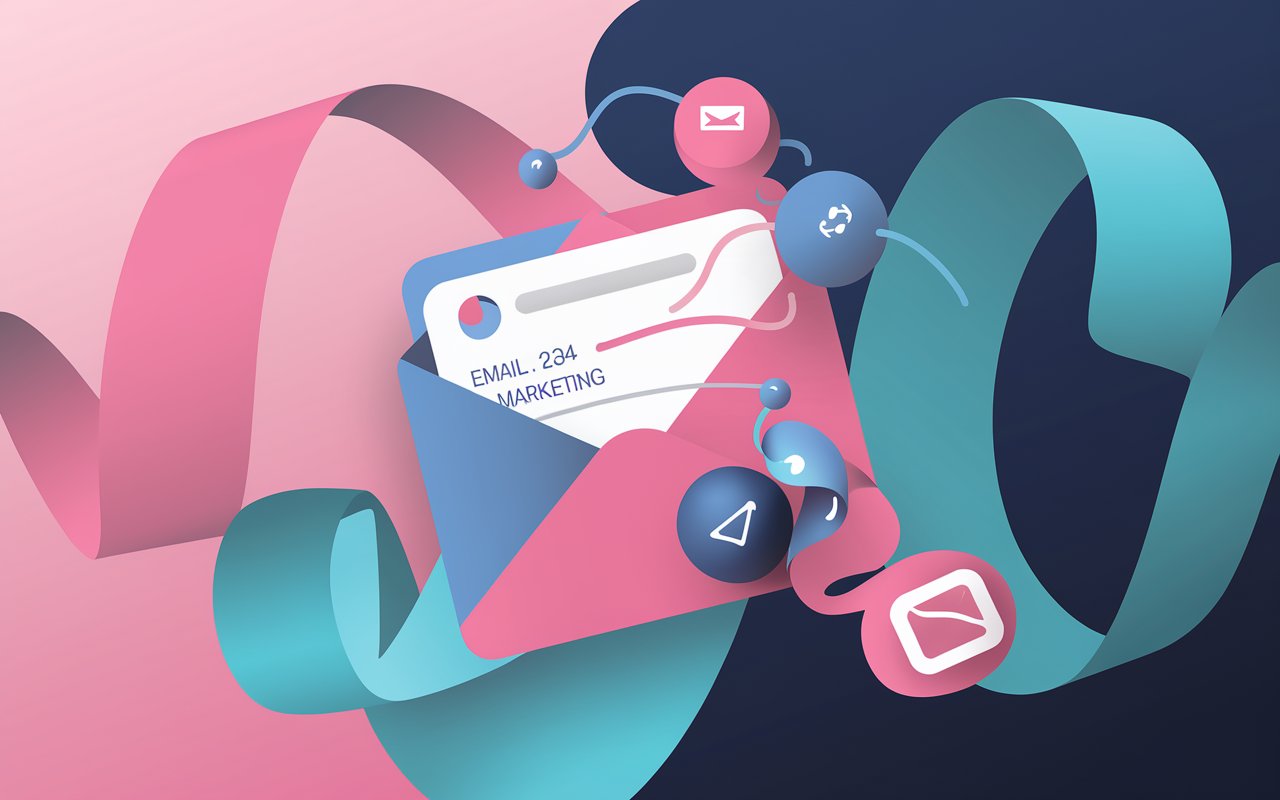Sending a follow-up email after an interview is a crucial step in the job application process. It’s your chance to thank the interviewer, reiterate your interest in the position, and make a lasting impression. Not only does it show professionalism, but it also demonstrates that you are detail-oriented and serious about the opportunity. In this article, we will walk you through how to craft the perfect follow-up email, from the subject line to the body, including templates, examples, and tips to help you stand out in your job search.
Whether you’re writing a thank you email after a job interview, or a second follow-up email, this guide will provide everything you need to know to ensure your email after an interview lands the right impression.
Why Is a Follow-Up Email After an Interview Important?
The interview process doesn’t end when you leave the room or hang up the phone. Sending a follow-up email is an extension of your performance during the job interview. It’s an opportunity to:
- Thank the interviewer for their time and the opportunity.
- Express your continued interest in the position.
- Reiterate why your skills and experience are a great fit.
- Address any additional questions or concerns that may have come up during the interview.
A well-crafted follow-up email shows that you are proactive and professional. It also gives you a chance to keep the conversation going and remind the hiring manager or recruiter why you’re the best candidate for the job.
When to Send a Follow-Up Email After an Interview
Timing is everything when it comes to a follow-up email. The best practice is to send your follow-up email within 24-48 hours of your interview. This ensures that your message arrives while the interview conversation is still fresh in the mind of the interviewer.
However, if you don’t hear back within a week, sending a second follow-up email can show your persistence and continued interest in the position. Always make sure to remain professional and polite, even if you haven’t heard back.
Crafting the Perfect Subject Line for Your Follow-Up Email
The subject line of your follow-up email needs to be clear, professional, and to the point. A strong subject line can help ensure that your email is opened and read promptly. Here are a few examples of good email subject lines:
- “Thank you for the opportunity – [Your Name]”
- “Follow-Up on [Job Title] Interview – [Your Name]”
- “Appreciated the Interview – [Your Name]”
A good subject line increases your chances of getting a response and sets the tone for the rest of your email. It’s the first thing the hiring manager will see in their inbox, so it’s essential to get it right.
How to Write a Follow-Up Email After an Interview
When writing your follow-up email, keep it professional, concise, and tailored to the specific job. Here’s a step-by-step breakdown of what to include:
1. Thank the Interviewer for Their Time
Start by thanking the interviewer for their time. Mention the interview conversation and highlight something specific that you discussed during the meeting. This shows that you were engaged and interested in the process.
Example:
“Thank you for taking the time to meet with me yesterday to discuss the [Job Title] position. I enjoyed learning more about the team and how my background in [mention specific skill] can contribute to [Company Name].”
2. Express Continued Interest in the Position
Use the follow-up email to reiterate your interest in the position. This is an excellent opportunity to reinforce your enthusiasm for the role and demonstrate why you’re excited about the opportunity.
Example:
“I remain very excited about the opportunity to join [Company Name] as a [Job Title]. I believe my experience in [mention relevant experience] aligns well with your team’s goals, and I would love to contribute to your continued success.”
3. Reiterate Key Qualifications
Take a moment to briefly mention your skills and experience that make you a great fit for the position. You can also address anything you felt you didn’t get the chance to fully explain during the interview.
Example:
“As we discussed during the interview, my background in [specific experience] and my passion for [industry or skill] make me confident that I can bring value to the team.”
4. Conclude with Next Steps
End your email by thanking the interviewer again and inquiring about the next steps in the interview process. This keeps the conversation open and shows that you’re eager to move forward.
Example:
“Thank you again for the opportunity. I look forward to hearing about the next steps in the hiring process and would be happy to provide any additional information if needed.”
Follow-Up Email Subject Line Examples
The subject line is critical in getting your email noticed. Here are some follow-up email subject line examples:
- “Thank you for your time, [Interviewer’s Name] – [Job Title] Interview Follow-Up”
- “Great to meet you – Follow-Up on [Job Title] Position”
- “Following Up on [Job Title] – [Your Name]”
Each of these subject lines is clear and professional, making it easy for the hiring manager or recruiter to recognize your email in their inbox.
Tips for Writing a Second Follow-Up Email
If you haven’t heard back after your first follow-up email, it’s okay to write a second follow-up email. However, it’s important to remain patient and professional.
1. Keep the Subject Line Simple
For your second follow-up email, keep the subject line polite but clear, such as:
- “Checking In on the Status of My Application – [Your Name]”
2. Reaffirm Your Interest
Reiterate your enthusiasm for the position and mention that you’re still interested in moving forward.
Example:
“I wanted to follow up and check in on the status of the [Job Title] position. I am still very interested in the opportunity to join your team and look forward to hearing back.”
3. Ask Politely About Next Steps
It’s important to keep your tone friendly and professional when asking about next steps in the hiring process.
Example:
“I would appreciate any updates you can provide on the next steps. Please let me know if there’s any additional information I can provide to assist with your decision-making process.”
Follow-Up Email Templates and Examples
If you’re not sure where to start, using an email template can save time and ensure that you’re covering all the key points. Here’s a template you can use for your first follow-up email after an interview:
Subject Line:
“Thank you for your time – [Your Name]”
Body:
Dear [Interviewer’s Name],
Thank you for taking the time to speak with me about the [Job Title] position at [Company Name]. I appreciated the opportunity to learn more about the role and the team, and I’m excited about the chance to contribute my skills in [mention relevant skill].
I remain very interested in the position and believe my experience in [relevant experience] aligns well with the team’s needs. Please feel free to reach out if you need any further information.
I look forward to hearing about the next steps in the process. Thank you again for your time.
Best regards,
[Your Name]
Myth Busting: Debunking Common Misconceptions About Follow-Up Emails After an Interview
When it comes to sending a follow-up email after an interview, there are many misconceptions that can lead to missed opportunities or missteps. Let’s take a look at some of the most common myths and clarify why they are incorrect, so you can ensure your interview follow-up email is effective and professional.
Myth 1: You Should Only Send a Follow Up Email If You Haven’t Heard Back
Fact: While many believe a follow-up email is only necessary if you haven’t heard back, this isn’t true. It’s essential to send an email after every interview to thank the interviewer and express continued interest, even if you expect a job offer soon. A good follow-up shows professionalism and leaves a positive impression.
Myth 2: Follow-Up Emails Are Not Necessary After the First Interview
Fact: Sending a follow-up email after the first interview is just as important as following up after subsequent interviews. It’s your chance to show appreciation and remind the hiring manager that you’re interested in the role. If you don’t get a response after the first follow-up, you may need to send a second one, but always start with a courteous email after the first interview.
Myth 3: Waiting Longer Shows You’re Not Desperate
Fact: Timing matters, and waiting too long to send an email can give the impression that you’re not interested. It’s best to send your interview follow-up email within 24-48 hours after the interview while the conversation is still fresh. Delaying your response might allow others to move ahead in the decision-making process.
Myth 4: You Can Use the Same Template for Every Follow-Up Email
Fact: While there are great templates and examples to guide you, a personalized follow-up is more effective. It shows that you’re willing to go the extra mile. Tailor the body of your email to include something specific from your interview conversation, like, “I really enjoyed our conversation about the company’s goals.” This type of personal touch makes a stronger impact.
Myth 5: Follow-Up Emails Are Only for Confirming Interest
Fact: While showing continued interest is essential, a follow-up email after the interview is also an opportunity to clarify or expand on any points discussed. You can use this email to thank them for their time and touch on skills or qualifications that you might not have highlighted during the meeting.
Myth 6: You Don’t Need to Follow Up if You Think You Didn’t Do Well
Fact: Even if you feel like your interview last week didn’t go as expected, following up is still important. A well-written interview thank you email shows professionalism and may shift the hiring manager’s perspective. Always check in and see how the process is moving forward, and don’t assume the interview is over until you hear a final decision.
Myth 7: Following Up Too Many Times Looks Pushy
Fact: There is a balance to be found, but sending a second interview follow-up email is often necessary if you haven’t received a response after your first one. As long as you remain polite and respectful, a follow-up after a reasonable period (typically one week) is not pushy. It’s okay to ask about the status of your application, especially if it’s been a while since you last heard from them.
Summary of Myths Busted:
- Follow-up emails are necessary after every interview, not just when you don’t get a response.
- You should always send a thank you note after the first interview, not just after receiving a job offer.
- Send your follow-up within 24-48 hours after the interview—waiting longer can hurt your chances.
- Personalizing the body of the email shows you’ve paid attention to the interview conversation.
- Even if the interview didn’t go perfectly, a follow-up can help maintain a good impression.
- It’s perfectly fine to follow up more than once—just be polite and professional in your approach.
By understanding these common myths and following the right strategies, you can ensure your follow-up email enhances your chances of landing the job.
Similarities and Differences: Key Aspects of Follow-Up Emails After a Job Interview
When writing a follow-up email after a job interview, understanding the key similarities and differences between various follow-up approaches can help you create a more effective strategy. Below, we explore five main points of comparison to provide insight into how you can tailor your follow-up communication.
1. Thank You Email vs. Follow-Up Email After a Job Interview
Similarity: Both a thank you email and a follow-up email after a job interview serve the purpose of reinforcing your interest in the position and maintaining contact with the interviewer. They help keep your candidacy fresh in the mind of the hiring team.
Difference: A thank you email typically focuses on showing appreciation for the interviewer’s time and effort, while a follow-up email goes a step further by also reiterating your qualifications and asking about the next steps in the recruitment process. A follow-up email is a proactive way to check in, especially if you haven’t heard back after the interview.
2. Personalized Follow-Up Email vs. General Follow-Up Email
Similarity: Both types of emails aim to leave a positive impression and demonstrate professionalism. In either case, the goal is to reach out and see how the hiring process is moving along while ensuring the email gets noticed.
Difference: A personalized follow-up email references specific details discussed during the interview, such as projects or goals, and shows that you were engaged in the conversation. On the other hand, a general follow-up email might stick to more standard wording and may not resonate as strongly with the hiring manager. Personalization can make you want to stand out more effectively.
3. Follow-Up Email vs. Follow-Up Call
Similarity: Both a follow-up email and a follow-up call serve the same purpose—checking in on your application status and reminding the employer of your interest. Either method shows that you’re proactive and serious about the opportunity.
Difference: An email after interview allows you to present your thoughts carefully and gives the interviewer time to process the message at their convenience. A phone call can be more direct and immediate but may come across as intrusive if the timing isn’t right. Many candidates opt for an email after interview because it’s less disruptive.
4. First Follow-Up Email vs. Second Follow-Up Email
Similarity: Both the first and second follow-up emails demonstrate persistence and professionalism. In both cases, it’s important to remain polite and respectful, even if you haven’t received a response yet.
Difference: The first follow-up email is typically sent within 24-48 hours after the interview and focuses on thanking the interviewer and reiterating your interest. The second follow-up email comes if you haven’t heard back after a week or so and focuses more on inquiring about the status of the hiring decision while maintaining enthusiasm for the role. It’s a careful balance to avoid being overbearing.
5. Follow-Up Emails in Different Stages of the Recruitment Process
Similarity: Regardless of when you send a follow-up email, whether it’s after the first interview or further into the recruitment process, the goal is to keep communication open and maintain a positive relationship with the employer. Always be sure to thank the interviewer for their time.
Difference: A follow-up email after a job interview typically emphasizes your fit for the position and asks about next steps. A follow-up email after later stages, such as a second interview, might be more focused on addressing any remaining questions the employer might have or clarifying key points. As the process advances, your follow-up can become more tailored to the specific stages of the hiring process.
Summary of Similarities and Differences:
- Thank you emails and follow-up emails share the goal of reinforcing interest but serve slightly different purposes.
- A personalized follow-up is more impactful than a general one.
- Both follow-up emails and phone calls have their place, but an email tends to be less disruptive.
- The tone of your first and second follow-up emails differs based on timing and context.
- Follow-up emails vary depending on the stage of the recruitment process, with more specific inquiries as you advance through interviews.
By understanding these nuances, you can tailor your follow-up approach to suit different scenarios, increasing your chances of making a lasting impression during the interview to show your professionalism and eagerness for the role.
Follow-Up Email After an Interview: Key Points to Remember
- Always send your follow-up email within 24-48 hours of the interview.
- Keep your subject line clear and professional to increase the chances of your email being noticed.
- Thank the interviewer for their time and reiterate your interest in the position.
- Briefly mention your skills and experience that align with the role.
- Ask about next steps in the hiring process and remain polite, even if you haven’t heard back.
- If necessary, write a second follow-up email to check in on your application status.
Sending a well-crafted follow-up email can increase your chances of getting the job and leave a positive impression on the hiring manager. It’s an essential part of your job search that should never be overlooked.




